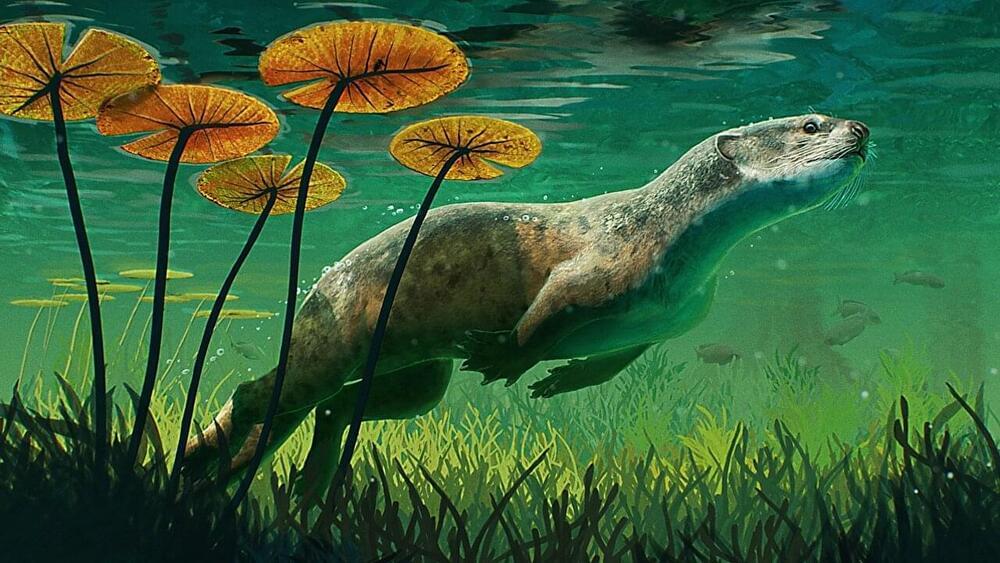Michael Levin talk for the Mind, Technology, and Society (MTS) talk series at UC Merced on January 23, 2023. Abstract: Each of us makes the remarkable journey from the physics and chemistry of a quiescentunfertilized egg to that of a complex human being. How can we understand the continuousprocesses that scale up minds from the tiny physiological competencies of single cells to the large-scale metacognitive capacities of large brains? Here, I will describe a framework known as TAME-Technological Approach to Mind Everywhere — which enables identifying, understanding, andrelating to unconventional cognitive agents. I will use the example of the collective intelligence ofcells during morphogenesis to illustrate how we can begin to widen the lessons of multiscale neuroscience well beyond neurons. This will be essential as we head into a future that will bepopulated by a wide range of evolved, designed, and hybrid beings with novel bodies and novelminds. I will conclude with a case study of our new synthetic biorobot (Xenobots) and a discussionof the implications of these ideas for evolution, biomedicine, and ethics.
Category: evolution – Page 77

The potential of targeting mitochondria-associated programmed cell death for age-related disease treatment
Scientists have recently reviewed the available literature to examine the critical roles played by mitochondria in maintaining homeostasis. The review summarized the involvement of mitochondria in age-related disease progression and highlighted its potential as a therapeutic target of these diseases. This review has been published in Experimental & Molecular Medicine.
Mitochondria is a cytoplasmic organelle in most eukaryotic cells and is enclosed by two phospholipid membranes: the inner mitochondrial membrane (IMM) and outer mitochondrial membrane (OMM). These membranes separate functionally compartmentalized structures, i.e., matrix and intermembrane space. Mitochondria contain a unique genetic code, mitochondrial DNA (mtDNA).
During evolution, most mitochondrial genes were lost or translocated to nuclei. However, genes that remained in mtDNA encode for essential translational apparatus, i.e., ribosomal RNAs and transfer RNAs. In addition, these genes also encode proteins that are key components of oxidative phosphorylation system (OXPHOS) complexes embedded in the IMM.
Can cells think? | Michael Levin
We know that humans are an intelligent species. But this biologist breaks down the intelligence of each of our cells — and it will blow your mind.
❍ Subscribe to The Well on YouTube: https://bit.ly/welcometothewell.
❍ Up next: An evolutionary history of the human brain, in 7 minutes https://www.youtube.com/watch?v=NGArM23mMNM
Michael Levin, a developmental biologist at Tufts University, challenges conventional notions of intelligence, arguing that it is inherently collective rather than individual.
Levin explains that we are collections of cells, with each cell possessing competencies developed from their evolution from unicellular organisms. This forms a multi-scale competency architecture, where each level, from cells to tissues to organs, is solving problems within their unique spaces.
Levin emphasizes that properly recognizing intelligence, which spans different scales of existence, is vital for understanding life’s complexities. And this perspective suggests a radical shift in understanding ourselves and the world around us, acknowledging the cognitive abilities present at every level of our existence.
Read the full video transcript: https://bigthink.com/the-well/intelligence-can-cells-think.
What If We Became Cyborgs?
How would it feel to control objects with your mind? Or hear colors? Or maybe even live forever? Well, if you want to find out, all you have to do is become a cyborg. How would being part machine affect us? Would it cause a greater divide between the rich and the poor? And is this the next step in human evolution?
Transcript and sources: https://whatifshow.com/what-if-we-become-cyborgs/
Can you translate this episode into another language? Add subtitles and we will link your YouTube channel in the description: https://www.youtube.com/timedtext_video?v=t6Enng4xZUs.
Watch more what-if scenarios:
Planet Earth: http://bit.ly/YT-what-if-Earth.
The Cosmos: http://bit.ly/YT-what-if-Cosmos.
Technology: http://bit.ly/YT-what-if-Technology.
Your Body: http://bit.ly/YT-what-if-Body.
Humanity: http://bit.ly/YT-what-if-Humanity.
T-shirts and merch: http://bit.ly/whatifstore.
Suggest an episode: http://bit.ly/suggest-whatif.
Newsletter: http://bit.ly/whatif-newsletter.
Feedback and inquiries: https://underknown.com/contact/

Before the Big Bang 11: Did the Universe Create itself? The PTC model
What happened before the Big Bang? In two of our previous films we examined cyclic cosmologies and time travel universe models. Specially, the Gott and Li Model https://www.youtube.com/watch?v=79LciHWV4Qs) and Penrose’s Conformal Cyclic Cosmology https://www.youtube.com/watch?v=FVDJJVoTx7s). Recently Beth Gould and Niayesh Afshordi of the Perimeter Institute for Theoretical Physics have fused these two models together to create a startling new vision of the universe. In this film they explain their new proposal, known as Periodic Time Cosmology.
0:00 Introduction.
0:45 NIayesh’s story.
1:15 Beth’s story.
2:25 relativity.
3:26 Gott & Li model.
6:23 origins of the PTC model.
8:17 PTC periodic time cosmology.
10:55 Penrose cyclic model.
13:01 Sir Roger Penrose.
14:19 CCC and PTC
15:45 conformal rescaling and the CMB
17:28 assumptions.
18:41 why a time loop?
20:11 empirical test.
23:96 predcitions.
26:19 inflation vs PTC
30:22 gravitational waves.
31:40 cycles and the 2nd law.
32:54 paradoxes.
34:08 causality.
35:17 immortality in a cyclic universe.
38:02 eternal return.
39:21 quantum gravity.
39:57 conclusion.
Elizabeth Gould has asked to make this clarification in the written text ” “Despite the availability of infinite time in the periodic time model, this doesn’t lead to thermalization in a typical time-evolution scenario, and therefore doesn’t, strictly speaking, solve the problem related to thermalization in the power spectrum. The reason for this is that, unlike bounce models with a net expansion each cycle, our model has an effective contraction during the conformal phases. Periodic time, therefore, has a unique character in which it reuses the power spectrum from the previous cycles, which is confined to a given form due to the constraints of the system, rather than removing the old power spectrum and needing to produce a new one.”
Earth Over The Next Billion Years
Our lifespans might feel like a long time by human standards, but to the Earth it’s the blink of an eye. Even the entirety of human history represents a tiny slither of the vast chronology for our planet. We often think about geological time when looking back into the past, but today we look ahead. What might happen on our planet in the next billion years?
Written and presented by Prof David Kipping, edited by Jorge Casas.
→ Support our research program: https://www.coolworldslab.com/support.
→ Get Stash here! https://teespring.com/stores/cool-worlds-store.
THANK-YOU to our supporters D. Smith, M. Sloan, C. Bottaccini, D. Daughaday, A. Jones, S. Brownlee, N. Kildal, Z. Star, E. West, T. Zajonc, C. Wolfred, L. Skov, G. Benson, A. De Vaal, M. Elliott, B. Daniluk, M. Forbes, S. Vystoropskyi, S. Lee, Z. Danielson, C. Fitzgerald, C. Souter, M. Gillette, T. Jeffcoat, J. Rockett, D. Murphree, S. Hannum, T. Donkin, K. Myers, A. Schoen, K. Dabrowski, J. Black, R. Ramezankhani, J. Armstrong, K. Weber, S. Marks, L. Robinson, S. Roulier, B. Smith, G. Canterbury, J. Cassese, J. Kruger, S. Way, P. Finch, S. Applegate, L. Watson, E. Zahnle, N. Gebben, J. Bergman, E. Dessoi, J. Alexander, C. Macdonald, M. Hedlund, P. Kaup, C. Hays, W. Evans, D. Bansal, J. Curtin, J. Sturm, RAND Corp., M. Donovan, N. Corwin, M. Mangione, K. Howard, L. Deacon, G. Metts, G. Genova, R. Provost, B. Sigurjonsson, G. Fullwood, B. Walford, J. Boyd, N. De Haan, J. Gillmer, R. Williams, E. Garland, A. Leishman, A. Phan Le, R. Lovely, M. Spoto, A. Steele, M. Varenka, K. Yarbrough & F. Demopoulos.
::Music::
Music licensed by SoundStripe.com (SS)[shorturl.at/ptBHI], Artlist.io, via Creative Commons (CC) Attribution License (https://creativecommons.org/licenses/by/4.0/), or with permission from the artist.
► 00:00 Hill — All Flesh Is as the Grass [https://open.spotify.com/track/1WuMK4qy9tUSGMINoEClxL?si=5635838259b34fa4]
► 03:56 Hill — The Great Alchemist [https://open.spotify.com/track/3PAx36jIsKiQMT9CQsRk4G?si=035fc819505445a1]
► 07:50 Outside the Sky — Trillions.
► 11:41 Hill — We Are Unceasing Beings [https://open.spotify.com/track/3TnhawPMycRrPuTnKzNGNN?si=bddf4e61177d48c4]
► 14:57 Indive — Halo Drive.
::Chapters::

Facing Our Transhuman Future
Does our increasing dependency on technology diminish our human potential? In this episode, visionary scientist Gregg Braden discusses the current transhuman movement – the merging of technology and human biology, often referred to as the singularity. He describes three levels of tech integration where the final level replaces our natural biology. In a time of rapid evolution, reflection and discernment are key. Braden highlights what we can do to release the conditioning of a technology-dependent society and how to follow the natural rhythms within ourselves.
The beauty of collective intelligence, explained by a developmental biologist | Michael Levin
The strange science experiment that blew a worm’s head off… and blew our minds.
This interview is an episode from @The-Well, our publication about ideas that inspire a life well-lived, created with the @JohnTempletonFoundation.
Watch Michael Levin’s next interview ► https://youtu.be/XHMyKOpiYjk.
Michael Levin, a developmental biologist at Tufts University, challenges conventional notions of intelligence, arguing that it is inherently collective rather than individual.
Levin explains that we are collections of cells, with each cell possessing competencies developed from their evolution from unicellular organisms. This forms a multi-scale competency architecture, where each level, from cells to tissues to organs, is solving problems within their unique spaces.
Levin emphasizes that properly recognizing intelligence, which spans different scales of existence, is vital for understanding life’s complexities. And this perspective suggests a radical shift in understanding ourselves and the world around us, acknowledging the cognitive abilities present at every level of our existence.

23-million-year-old Otter-Like Seal May Have Used Whiskers to Forage
An ancient relative of modern seals—known as Potamotherium valletoni—that had an otter-like appearance and lived over 23 million years ago likely used its whiskers to forage for food and explore underwater environments, according to a new study in Communications Biology. The findings provide further insight into how ancient seals transitioned from life on land to life underwater.
Although modern seals live in marine environments and use their whiskers to locate food by sensing vibrations in the water, ancient seal relatives mostly lived on land or in freshwater environments. Some species used their forelimbs to explore their surroundings. Prior to this study, it was unclear when seals and their relatives began using their whiskers to forage.
Alexandra van der Geer and colleagues investigated the evolution of whisker-foraging behaviors in seals by comparing the brain structures of Potamotherium with those of six extinct and 31 living meat-eating mammals, including mustelids, bears, and seal relatives. Brain structures were inferred from casts taken from the inside of skulls.